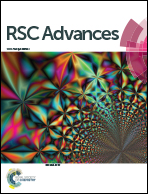Solvothermal synthesis of the defect pyrochlore KNbWO6·H2O and its application in Pb2+ removal†
Abstract
The octahedral defect pyrochlore KNbWO6·H2O is prepared by a two-step solvothermal process. It shows an excellent performance in the removal of toxic Pb2+ by ion exchange. The removal process fits well with the Langmuir isotherm, and the maximum removal capacity is 86.95 mg g−1 at pH 5.0. High selectivity to Pb2+ is observed in an aqueous solution also containing Mn2+, Cd2+ and Co2+. The kinetics of the ion exchange process can be expressed by the pseudo-second-order rate kinetic model.


 Please wait while we load your content...
Please wait while we load your content...